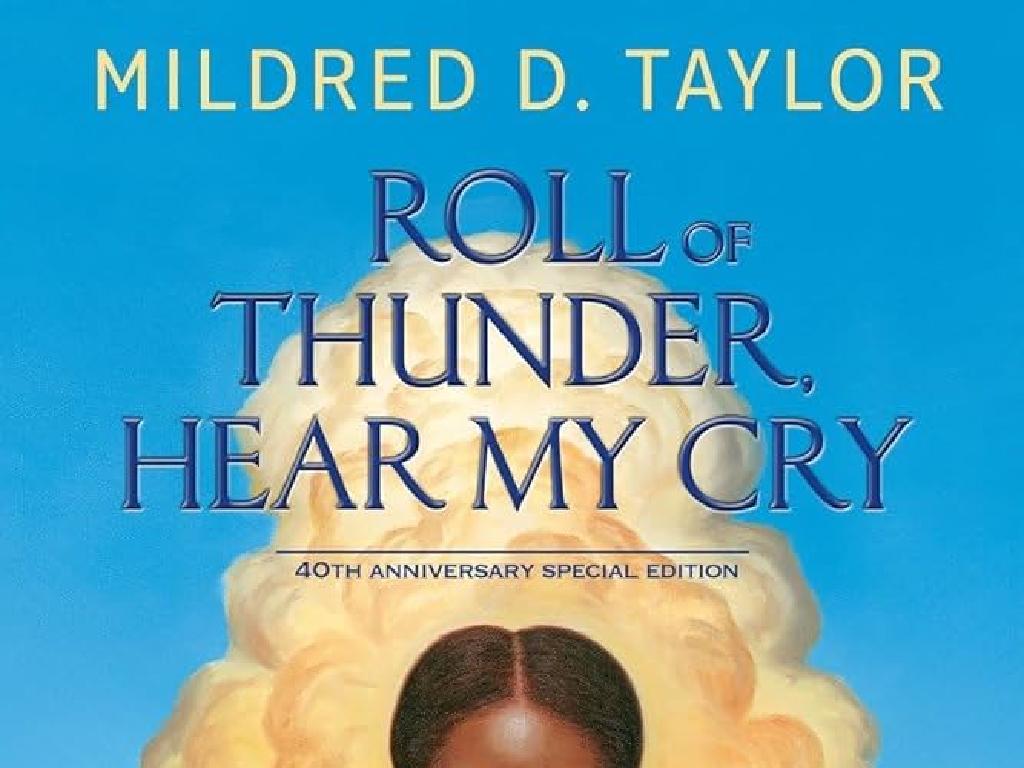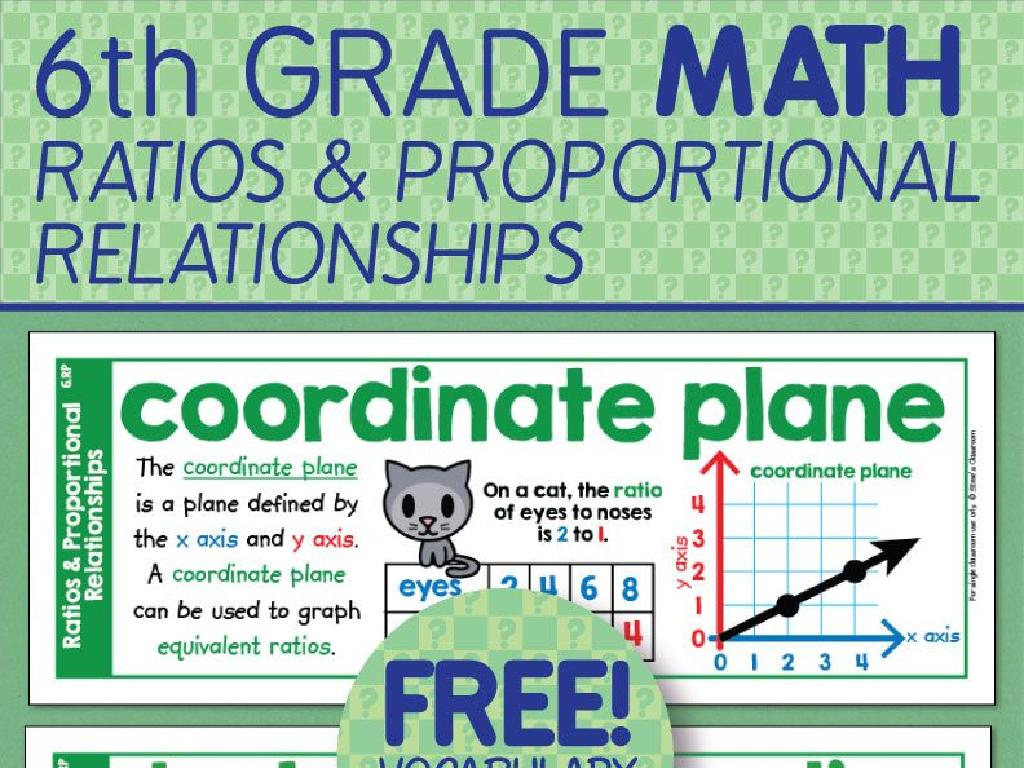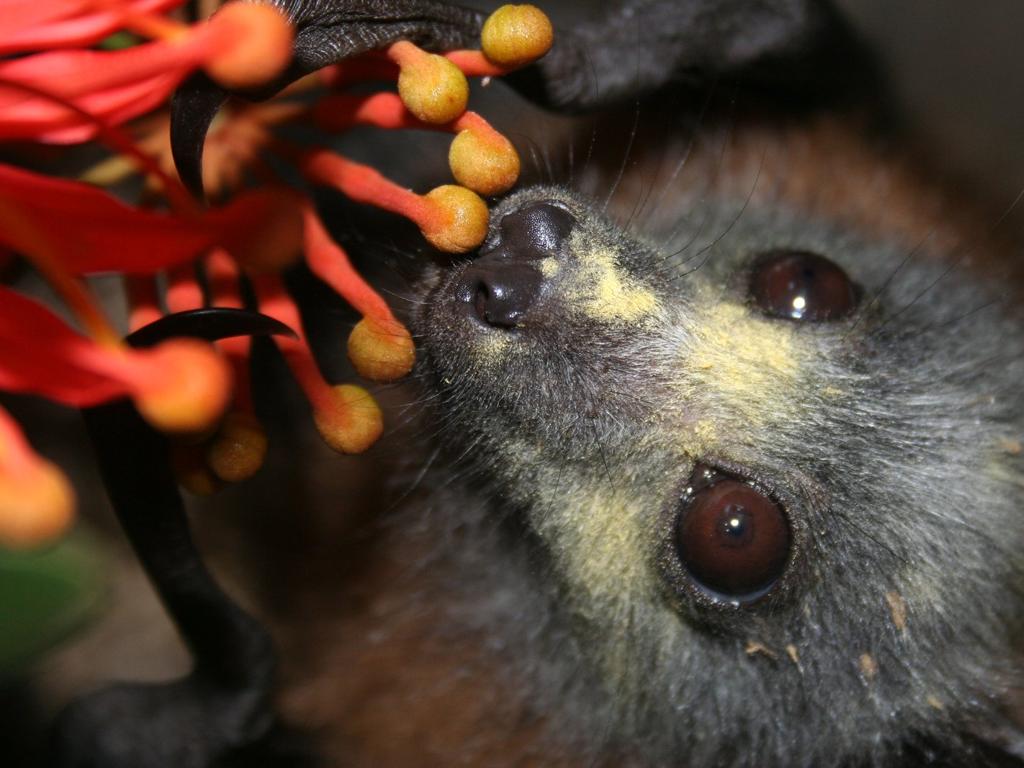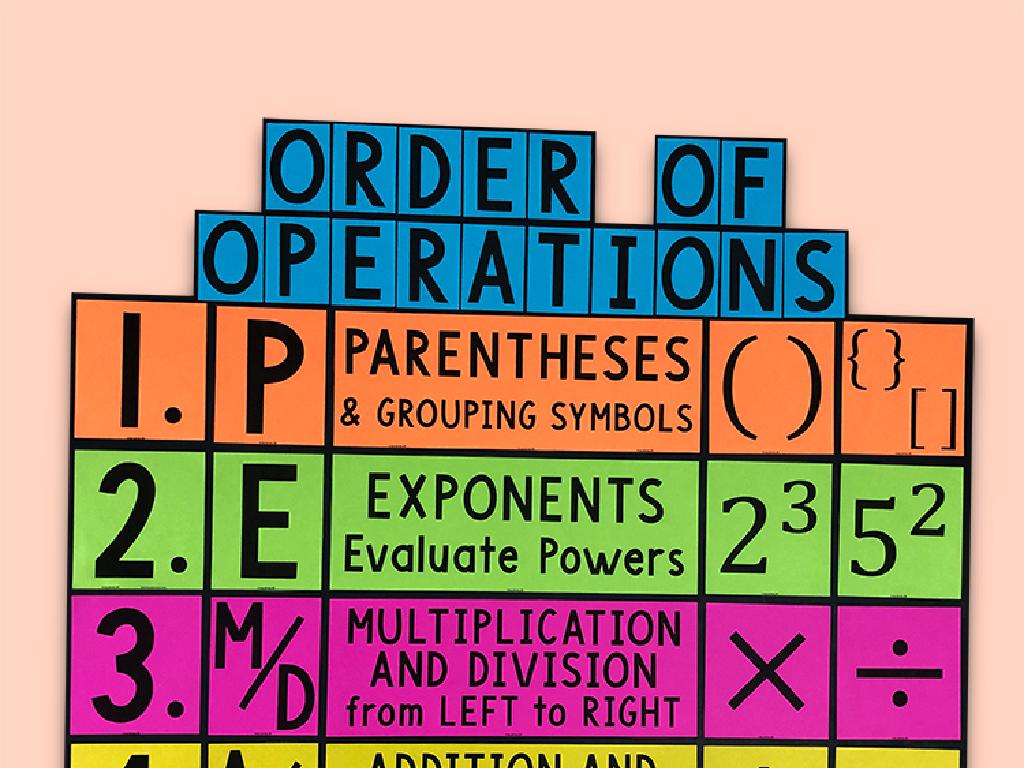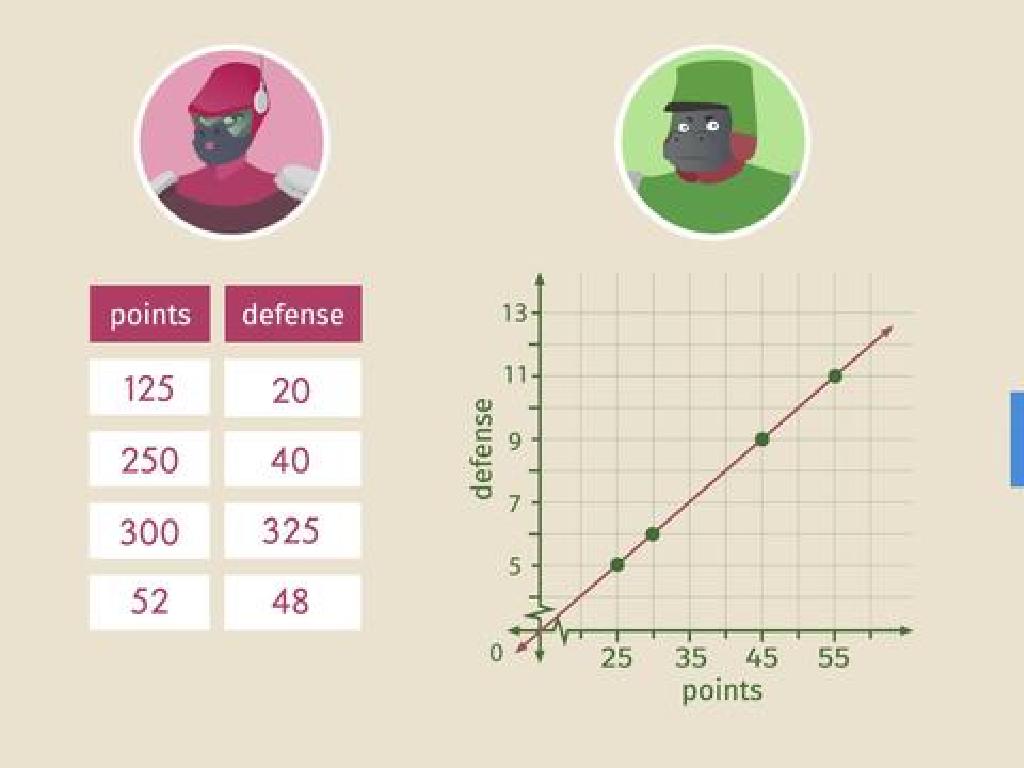Probability Of Mutually Exclusive Events And Overlapping Events
Subject: Math
Grade: Seventh grade
Topic: Probability
Please LOG IN to download the presentation. Access is available to registered users only.
View More Content
Exploring Probability: Mutually Exclusive & Overlapping Events
– Understanding event probability
– Defining probability
– Probability measures the likelihood of an event occurring
– Mutually exclusive events
– Two events that cannot happen at the same time, e.g., flipping a coin to get heads or tails
– Overlapping events
– Events that can occur at the same time, e.g., drawing a red card that is also a king
|
This slide introduces the concept of probability as a measure of how likely an event is to occur. It’s important to clarify the difference between mutually exclusive events, where two events cannot happen at the same time, and overlapping events, where they can. Use a coin flip to illustrate mutually exclusive events, as it can only land on heads or tails, not both. For overlapping events, use the example of drawing a card from a deck that could be both red and a king. Encourage students to think of other examples and understand that the probability of mutually exclusive events is the sum of their individual probabilities, while the probability of overlapping events requires more careful analysis.
Understanding Probability
– Probability: measure of likelihood
– Likelihood an event will happen, e.g., flipping heads on a coin
– Scale: 0 (impossible) to 1 (certain)
– 0 means it can’t happen, 1 means it will definitely happen
– Expressed in fractions, decimals, percentages
– 1/2 or 0.5 or 50% all represent an equal chance of occurring
|
This slide introduces the concept of probability, which is a fundamental part of mathematics, especially in statistics. Probability quantifies the chance of an event occurring and is expressed in various forms such as fractions, decimals, or percentages. A probability of 0 means the event is impossible, while a probability of 1 means it is certain to occur. Understanding this scale is crucial for students as they begin to explore more complex probability scenarios, including mutually exclusive and overlapping events. Use examples like coin tosses or dice rolls to illustrate these concepts. Encourage students to think of real-life situations where probability plays a role.
Probability: Mutually Exclusive Events
– Definition of mutually exclusive events
– Events that cannot occur simultaneously
– Example: Coin flip outcomes
– A coin can’t be heads and tails at the same time
– Calculating probabilities
– Add individual event probabilities for total
– Application in real scenarios
|
This slide introduces the concept of mutually exclusive events in probability, which are events that cannot happen at the same time. For example, when flipping a coin, it cannot land on both heads and tails simultaneously. To calculate the probability of mutually exclusive events, students should learn to add the probabilities of each individual event. This is a fundamental concept in probability that will help students understand more complex scenarios as they progress. Encourage students to think of other examples of mutually exclusive events and practice calculating probabilities with simple exercises.
Understanding Overlapping Events
– Overlapping events definition
– Events that can occur simultaneously
– Example of overlapping events
– Drawing a red queen from a deck of cards
– Calculating their probability
– Add individual probabilities, subtract their intersection
– Practical application in problems
|
Overlapping events are two or more events that can occur at the same time. For example, when drawing a card from a standard deck, the card can be both red and a queen. To calculate the probability of overlapping events, add the probability of each event occurring separately and then subtract the probability of both events occurring together. This is important to understand because it helps in solving more complex probability problems where events are not mutually exclusive. Encourage students to think of other examples of overlapping events and practice calculating probabilities with different scenarios.
Probability: Mutually Exclusive Events
– Rolling a die: 2 or 5
– Landing on only one number, not both
– Drawing a card: heart or club
– Drawing one suit type, not both
– Practice: Prob. of 1 or 6 on a die
– Calculate chance of 1 or 6 in a single roll
– Understanding mutually exclusive
– Events that cannot happen at the same time
|
This slide introduces students to the concept of mutually exclusive events in probability, where two events cannot occur at the same time. Use the example of rolling a die to explain that it can only land on one number per roll, making the outcomes mutually exclusive. Similarly, when drawing a card, it can only be a heart or a club, not both. The practice problem encourages students to apply this concept by calculating the probability of rolling a 1 or a 6 on a die, which is 1/6 + 1/6, since there are two desired outcomes out of six possible ones. Emphasize that the key characteristic of mutually exclusive events is that the occurrence of one event excludes the possibility of the other event occurring simultaneously.
Probability: Overlapping Events
– Overlapping events in weather
– It’s possible to have both cloudy weather and rain
– Clothing as overlapping events
– A shirt can feature both blue color and stripes
– Practice: Red card or a queen?
– Calculate the chance of drawing a red card or a queen from a standard deck
|
This slide introduces students to the concept of overlapping events in probability, where two events can occur at the same time. Use everyday examples to illustrate this concept, such as weather conditions and clothing patterns. For the practice problem, guide students through the process of calculating the probability of drawing a red card or a queen from a deck of cards. Explain that there are 26 red cards and 4 queens in a standard deck, but since 2 queens are red, we must account for this overlap to avoid double-counting. This exercise will help students understand how to calculate probabilities in scenarios where events are not mutually exclusive.
Calculating Probabilities: Mutually Exclusive & Overlapping Events
– Addition rule for exclusive events
– If A and B cannot happen at the same time, P(A or B) = P(A) + P(B).
– Addition & subtraction for overlap
– For events that can occur together, P(A or B) = P(A) + P(B) – P(A and B).
– Interactive calculation examples
– We’ll use dice and card examples to learn these rules.
– Understanding through practice
|
This slide introduces the fundamental concepts of calculating probabilities for different types of events. Start by explaining the addition rule for mutually exclusive events, which are events that cannot happen at the same time. Then, discuss the modified addition rule for overlapping events, where the probability of both events occurring together must be subtracted to avoid double-counting. Use interactive examples such as rolling dice to find the probability of getting a certain number or drawing cards to find the probability of getting a heart or a king. Encourage students to solve these problems along with you to solidify their understanding. The goal is for students to grasp these concepts through active participation and to apply these rules to various scenarios.
Class Activity: Probability in Action
– Group coin flip experiment
– Each group flips a coin 50 times and records results
– Card drawing observations
– Draw cards from a deck, note outcomes for 30 draws
– Record and calculate probabilities
– Use results to find the experimental probability
– Compare experimental vs theoretical
– How do your results align with predicted probabilities?
|
This activity is designed to give students hands-on experience with probability. Divide the class into small groups and provide each group with a coin and a deck of cards. For the coin flip experiment, students will flip a coin multiple times and record the number of heads and tails to calculate the experimental probability of each outcome. Similarly, for the card experiment, students will draw cards from a shuffled deck and record the outcomes to determine the probability of drawing certain types of cards. After the experiments, students will compare their experimental probabilities with the theoretical probabilities (e.g., 50% chance of heads or tails for a coin flip). Discuss any differences and reasons why experimental probability may not match theoretical probability exactly, such as sample size or randomness. This will help students understand the concepts of mutually exclusive and overlapping events in a tangible way.
Wrapping Up: Event Types in Probability
– Recap: Mutually Exclusive Events
– Events that cannot happen at the same time, e.g., rolling a 2 or a 5 on a die.
– Recap: Overlapping Events
– Events that can occur together, e.g., drawing a red card that is also a king.
– Significance of event types
– Homework: Probability Worksheet
– Practice identifying and calculating each event type.
|
As we conclude today’s lesson, it’s crucial to remember the difference between mutually exclusive and overlapping events. Understanding these concepts is fundamental in probability as it affects how we calculate the likelihood of outcomes. For homework, students will complete a worksheet that includes problems on both mutually exclusive and overlapping events, reinforcing today’s learning. This will help solidify their understanding and prepare them for more complex probability scenarios. Encourage students to attempt the worksheet independently, but remind them to reach out if they need clarification on any concepts covered in class.

